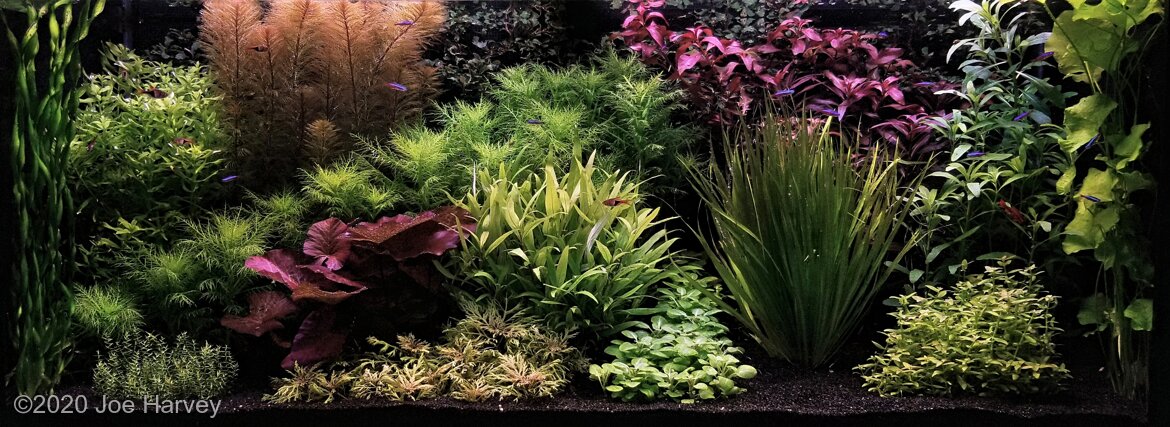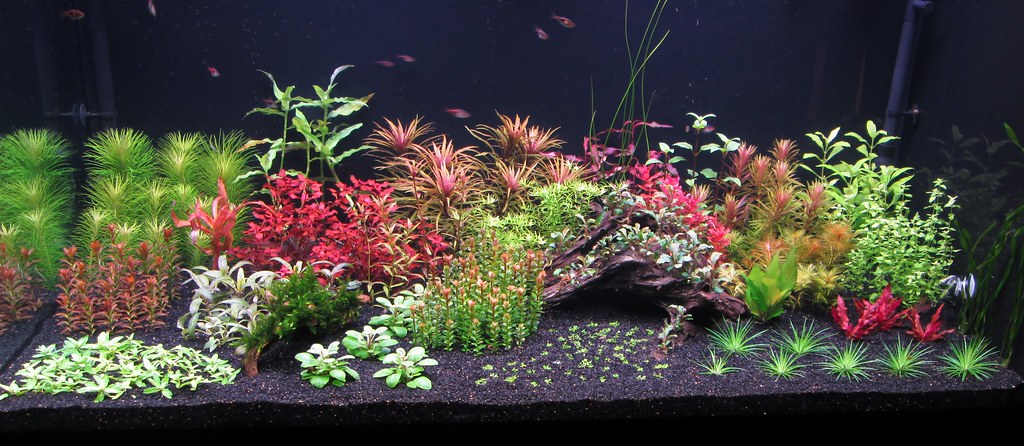Thanks Hufsa, your posts are always so helpful and this one may be the best one yet, super helpful👍
Ah im glad it didnt just come across as a lengthy doomsday-esque ramble about the naughty black spheres

This is not a problem as I am super anal/OCD, and enjoy dosing daily.
I did get this impression 😆 Dont worry there are more of us so youre in good company 😅 The key is not letting it take over completely
It definitely sounds like more of a pain then I had imagined. In fact, I had wrongly assumed aquasoil would be best for frequent uprooting(a property I really would like).
Yes this was one of the points I wanted to clarify so you didnt get a big surprise later on, inert substrates are superior for uprooting stuff with minimal mess, thats just a fact.
While I dont really participate a lot in the hardcore aquascaping side of the hobby, I have noticed that a lot of beginners are quite surprised to discover aspects of the hobby that do not get touched on much at all by the quite glossy images and videos that are found on youtube, instagram etc. Theres a very large amount of pictures of beautiful plants and scapes, and very little of dirt and grime, stunted or unhappy plants with the confused aquarist, unexpected algae outbreaks and various other stuff. I think it doesnt help the matter that a 30 minute long video of someone scrubbing pipes and hoses while cursing under their breath doesnt make for quite as captivating viewing as beautiful pearling plants and shoaling fish.
You are right on the mark Hufsa. That is entirely possible and I thank you for bringing this possibility to my attention. I am kind of operating from a... Do as much research as possible, buy the best I can afford, and design the best thought out system I can so if I fail it is all on me angle. That said, you guys are making me serious consider whether aquasoil is the right choice for me. It's hard to not look at all of your, and others in the threads, experience and the fact that you all moved on from aquasoil. That you evolved past it and still have nice tanks with less trouble and silt lol.
Since I am hoping your first high tech tank turns out the way you want it to and that you get to enjoy this hobby for many years to come, I feel like I should warn you about something.
I have seen a fair amount of times that the ones who do the most prep work and have the highest expectations for their brand new high tech tank, are the ones who take it the absolutely hardest when something goes either a little or very wrong with their new tank. Sort of like the higher up you are the harder the fall will be. Some people get really lucky, have a minimally painful maturation phase and glide smoothly past all the obstacles that life can throw at a tank. But the majority will run into some problem or another. Many tanks will have at least one or two types of algae that their system is prone to getting. Being prepared for "sh*t to hit the fan" at some point, may help with the shock when the high tech tank that was many months of planning and saving, many hours of scaping, gluing and planting, slowly but surely starts deviating from the proceedings outlined by all the youtube videos. Im not saying it 100% will happen to you, but it makes it a bit easier if you know about it in advance.
I will definitely be joining team sand at some point as I have a need/want to try different substrates for my own wisdom. That said, you are serious making me consider trying first before aquasoil
Thats one of the things I like the most about this hobby, to try out different approaches and methods and see which ones work for me and my tank. I think you will enjoy it a lot too, theres a lot of different branches of the hobby to deep dive into

While we have a few sand users participating in this thread, the majority of aquascapers and planted tank keepers do use aquasoil or some sort of enriched substrate as you already know. Many scapers are more interested in creating the scape that they envision in their minds, and arent necessarily interested in knowing more about fertilizer, growing rare or difficult plants, or getting really deep into all of the aspects of how a tank works. For them aquasoil and some sort of well known premade fertilizer is what makes the most sense, so they can spend less time on growing plants and more time on shaping the scape into how they want it to be. They usually trim off the top of the plants more than they uproot and replant the tops, the former technique is easier, takes less time and makes less of a mess substrate wise. But a group of stemplants can only be trimmed so many times until the old growth starts to deteriorate too much, and uprooting and replanting to restart the group is needed.
Some stemplants do not tolerate or tolerate poorly to be trimmed from the top. These need to be uprooted every time and length trimmed from the bottom. Aquascapers dont usually use these species of plants, probably because its too much hassle. Keep in mind that many pro aquascapes only run for less than a year before being taken down and rescaped. Usually this means that they are broken down before the soil becomes too depleted or silty.
Dutch aquascapes are a notably different kind, here very minimal hardscape is used, and the focus is on growing an underwater garden of plants growing to their fullest potential. Uprooting is much more common in this style, and here sand or fine gravel substrates becomes more common, and I dont think it is by chance.
or maybe even a combination of the two(think AS in the back and sand in the foreground).
Basically what
@KirstyF said. Sand and soil is commonly done, and commonly complained about

They just really want to mix together!
Yes, it sure is. I'm looking at several hundred dollars to fill my new tank with it. It's not hard to want to look at other option lol.
Dang in that case sand looks a lot stronger of an option.. especially since you are having such trouble sourcing non-crappy options for soil.
Im actually not a convert to sand, I have used sand all along (unlike some of these pretenders 😏

jk ) but experimented with using soil in pots to see if there was difference in growth.
With being used to sand from before, I was very unimpressed with how little handling aquasoil could take, and how messy it was.
But I have never run a high tech tank with all soil, that needs to be clear.
I personally dislike the look of aquasoil as well, but I have thought about eventually switching my tank over to aquasoil contained in something and capped with sand.
But the more I try to work out how to do it the more annoyed I become with the concept, I would want the roots to be able to reach the soil, but the soil must absolutely not come up through the sand, and the plants I keep frequently need uprooting. So I am actually thinking right now I might stay with only sand indefinitely. Our dearest
@Wookii is going with something-or-other capped with sand on his new spaceship tank, so I was thinking I would wait and see how it goes for him.
One pro about going with sand first in your case would be the much lower cost upfront.
Maybe more helpful then any post I have ever read on this topic. So helpful. I appreciate it so much. You and others are really helping me wade through the weeds so to speak and hopefully get to a winning setup without making so many mistakes and taking much time to gain wisdom. I can't thank you enough🙂.
Gosh you'll make us all blush 😊
I
cant tell you definitely that you will be able to grow every species of plant in plain sand. I dont have the experience or the evidence to support such a claim.
Also, while I have many years of experience using sand in a fish tank (
closing in on 20 years now[Edit] forgot about a ~5 year hiatus, so make that ~15 years), I have only a couple years of experience in seriously growing plants, and the step to CO2 injected I took only just february this year. I will also say im not super good at it yet, I grow some things ok but some are still a struggle and I still have a few algae issues
🙂 So definitely not a super pro like Dennis Wong etc. Basically I dont want you to give my words more weight than they deserve. Plantnoobdude is a much better source for which plants can grow in plain sand, hes got a couple of species going that I still struggle with figuring out. He's also a dirty cheater who uses RO water 😁, which may or may not make things a bit easier (jury is still out).
The con for you going with sand right off the bat would be that you are thrown right into the deep end if you decide you want to keep all the difficult stemplant species.
Especially within the family of plants Lythraceae there are some plants that seem to struggle a lot with being fed only through the leaf.
If you havent read the thread called
Rotala kill tank yet then boy, grab something to drink and a snack and cancel all of your upcoming appointments

Im quite sure you are up to the challenge personally, but there is no guarantee that the result will be satisfactory to you, if that makes sense.
Im optimistic about being able to grow all my plant species "flawlessly" in sand eventually, but I dont know for absolutely sure if I will get there with all of them, and I wont make any promises to anyone else.
I really enjoy trying to figure it out though, which is why I dont mind a bit of struggle along the way

 www.ukaps.org
www.ukaps.org









